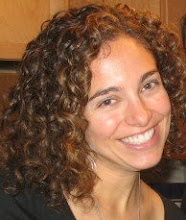In these first two weeks on the farm I have already been a part of this segue to the fall. During my first few days at St. Joe's I harvested the last of the cucumbers in the hoophouse before tearing out the bed and preparing it for greens. Each day we frantically pick the ripest tomatoes, which have only a few more weeks. Just yesterday we tore out the remaining basil - some of it already damaged by the early morning frost, and prepared the bed with a broadfork, claw and hefty amount of compost. Though I still spend my days out in the warm summer sun, our latest farm work provides a good reminder that fall is just around the corner.
This week we directly seeds carrots and transplanted scallions, chard and lettuce into the hoophouse. The harvest included different varieties of tomatoes (read my guest blog post about Sun Gold tomatoes here), peppers, eggplant, chard, kale, basil, beets and carrots.
The physical demands of the farm are certainly new to me. But the cycle of crops, the forecasting of what to harvest next, seems somehow intuitive, and I wonder how much of it is related to my Jewish roots. Although I was grew up in a city, I was raised in the Jewish tradition, whose calendar maintains a strong agricultural tie so that the year has always held a close relationship with the land and the major pilgrimage holidays throughout the year are all connected to the harvest cycle. As this synagogue's website nicely explains, Passover marks the barley harvest in early spring, Shavuot marks the wheat harvest in early summer and the final harvest of the season is celebrated on the holiday of Succot in the fall. With the month of Elul beginning this week, it is hard not to anticipate the Jewish New Year and Succot after that.
Each day I appreciate how lucky I am to spend my time on The Farm, around a bounty of beautiful produce and a healthy eco-system filled with life (also filled with mosquitoes!). I eat better, sleep better and am inspired by the work of so many professionals and volunteers I've met so far. And the work itself is hard. On a small farm where almost everything is done by hand, patience and determination are good skills to have. But there's something very satisfying about planting and harvesting in the same day, experiencing two ends of the farm cycle at once. Planting is the start of something new, an act of faith and anticipation while harvesting is the result, the yield and fosters a sense of gratitude. I am grateful to experience both.







